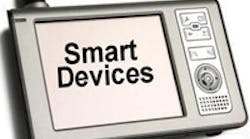By Garry Cusick, System Solutions Manager - Endress + Hauser (FDT Member Company)
Instrument asset management solutions (IAMS) provide engineering, operations and maintenance staff the tools to start up, manage and maintain intelligent devices safely and efficiently across the enterprise. To be effective, these solutions must be integrated into host systems or another enabling application to provide the human interface and connectivity to the devices across a variety of instrumentation networks. In order to optimize device integration, two technologies, FDT and EDDL, have been standardized to manage data flow from the device to the hosting application.
However, conflicting claims on the benefits and advantages of each technology have created some confusion among end users. Both standards allow applications to be built on nearly any operating system, but Windows totally eclipses the installed bases. Below you will find a short description of each technology.
FDT Technology, also known as IEC-62453, provides applet-based visual device information designed by the device manufacturer to operate in a variety of host Frame Applications. The instrument DTM looks and performs the same regardless of the host system. FDT and supporting organizational end-user and automation-supplier members believe that device manufacturers know more about the operation and maintenance requirements of the device than anyone else, and can provide the best IAMS for the most demanding end users. Thus the device manufacturers are able to provide best-in-class support for their devices with IEC-62453 while maintaining identical form, fit and function across all host systems.
EDDL and Enhanced EDDL Technology, also known as IEC 61804, is a text file that describes the device capabilities and some visualization parameters to the host application. IEC 61804 binary device descriptions as implemented are, unfortunately, incompatible between Foundation fieldbus HART and Profibus. Advanced device management is often accommodated with "helper applications" that are unique to the host system and therefore not cross-system compatible. As a result, the appearance and functionality of the device support will vary across installations and host system suppliers.
Because smart device integration has become essential to end users in the industry, it became important to clarify these inconsistencies by evaluating the technologies in an independent environment to determine the benefits from the end user’s perspective.
The International Instrument Users Association (WIB), a non-profit organization providing advisory services to plant owners and engineering consultants around the world for the best selection of instrumentation and systems for process automation, was selected to perform this evaluation. As a neutral and competent party, WIB agreed to perform this study by commissioning Shell Global Solutions International (SGSi) to do a comparison of FDT and EDDL technologies within a Foundation fieldbus communication protocol environment. The objective of this evaluation entailed analysis of data accessibility and effectiveness in commissioning and maintenance execution by comparing present functionality of FDT, EDDL and Enhanced EDDL technologies using the Foundation fieldbus H1 protocol. The SGSi test facility was used to evaluate the performances of four Foundation fieldbus devices that support both FDT and EDDL for a number of device/systems combinations (See Figure 1). This evaluation is a milestone as it provides an objective assessment by an independent laboratory recognized for its competence and experience.
Figure 1: Tested Combinations
Evaluation Results
After the investigation was complete, the basic claims on pros/cons of FDT and eEDDL are confirmed using Foundation fieldbus Technology as detailed in Figure 2.
The objective test summary concludes that FDT Technology meets end users needs, offering enhanced data accessibility and extended functionality as used in commissioning and maintenance of Foundation Technology smart devices in a very effective and flexible manner.
Understanding the two technologies, it is easy to visualize why the WIB study developed its conclusion about FDT Technology (See Figure 3). Although there are similarities in the technologies, the application-based DTM can handle more complex devices and provide more functionality that will take you through the entire system lifecycle.
The FDT Group and WIB meet annually in efforts to discuss recommendations and review advancements made to the technology each year keeping FDT Technology fine tuned to the needs of the end user community. To receive a complete report on the findings from this study, please request a copy at [email protected].




